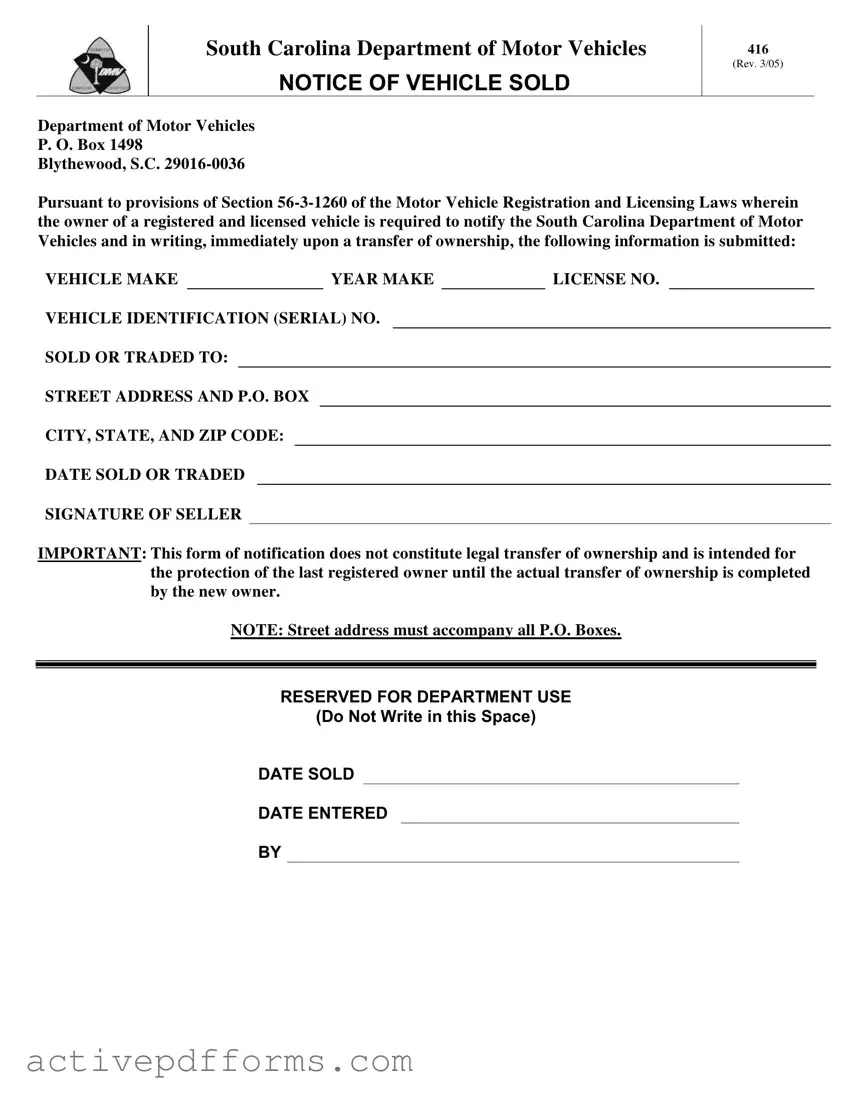Free Sc Dmv 416 PDF Template
The South Carolina Department of Motor Vehicles Form 416, commonly known as the Notice of Vehicle Sold form, serves a crucial purpose. It is a document that the seller of a vehicle must submit to the South Carolina Department of Motor Vehicles (SC DMV) immediately after the sale or transfer of ownership. This form notifies the SC DMV of the change in ownership and is a necessary step to protect the previous owner until the new owner completes the official transfer of ownership.
Edit Sc Dmv 416 Now

